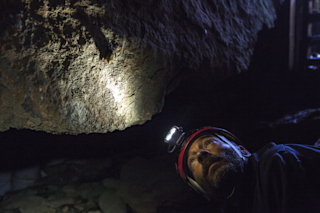Richard Stark, a biologist with the U.S. Fish and Wildlife Service, examines a tricolored bat (Perimyotis subflavus)near the entrance of the cave. (Credit: Geoffrey Giller) Hidden away in the woods near the upstate New York town of Lake George is a cave. The entrance of the cavern, an abandoned graphite mine, is almost perfectly round, with a trickle of water running out of it. On a weekday morning in late February, researchers, led by Carl Herzog, a wildlife biologist for the New York State Department of Environmental Conservation, gather at the cave mouth and swap hiking boots for waders before filing in. Kate Ritzko, a fish and wildlife technician for the Department, reminds everyone of proper caving etiquette: Make sure geotagging on phones is turned off, so that no one accidentally reveals the location of this sensitive site; and keep voices low, so as not to disturb the bats the ...
Glimmers Of Hope In the Dark Battle To Save Bats
Explore the impact of white-nose syndrome on bat populations and the hopeful signs of recovery for the little brown bat.
More on Discover
Stay Curious
SubscribeTo The Magazine
Save up to 40% off the cover price when you subscribe to Discover magazine.
Subscribe













